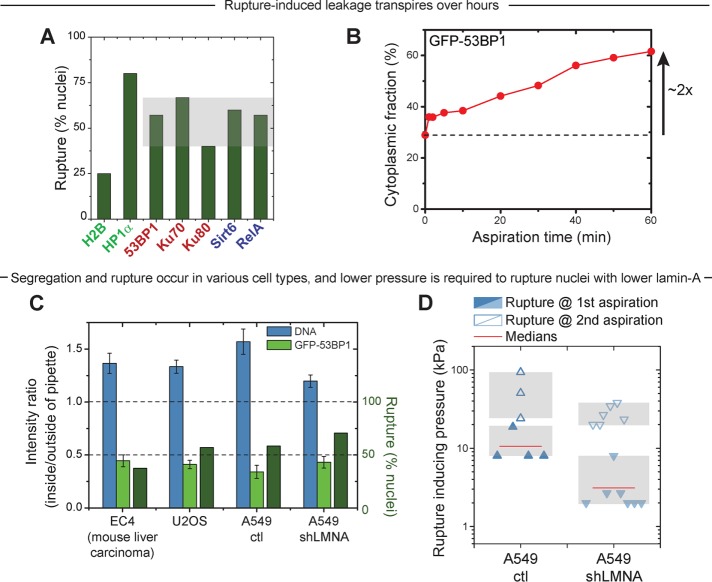FIGURE 3:
Occasional nuclear rupture in aspiration is made easier by knockdown of lamin-A. (A) Nuclear rupture is often observed during aspiration into ~3 µm pipettes. Gray box indicates the range of rupture frequencies for non–chromatin-bound mobile proteins (≥10 cells/group; at least three experiments). (B) During aspiration of a representative cell overexpressing GFP-53BP1, the mobile protein leaks steadily into the cytoplasm. The intensity of 53BP1 in the cytoplasm and in the nucleus was measured over time. Reported is the percentage of total 53BP1 found outside the nucleus—that is, the cytoplasmic fraction—as a function of aspiration time. The cytoplasmic fraction roughly doubles over the course of an hour. (C) Aspiration leads to segregation and rupture of GFP-53BP1 in other cell types, as well: specifically, A549 human lung cancer cells and EC4 mouse liver cancer cells. The percent of nuclei that rupture is shown in dark green (≥10 cells/group; at least three experiments). (D) With lamin-A knockdown, lower pressure is required to induce nuclear rupture. During a typical aspiration experiment, an initial low pressure (∼10 kPa) is applied to the nucleus for a sustained period, after which the pressure is increased (to ∼50 kPa) if the nucleus has not yet been fully aspirated. The stages are referred to as first and second aspiration, respectively.

